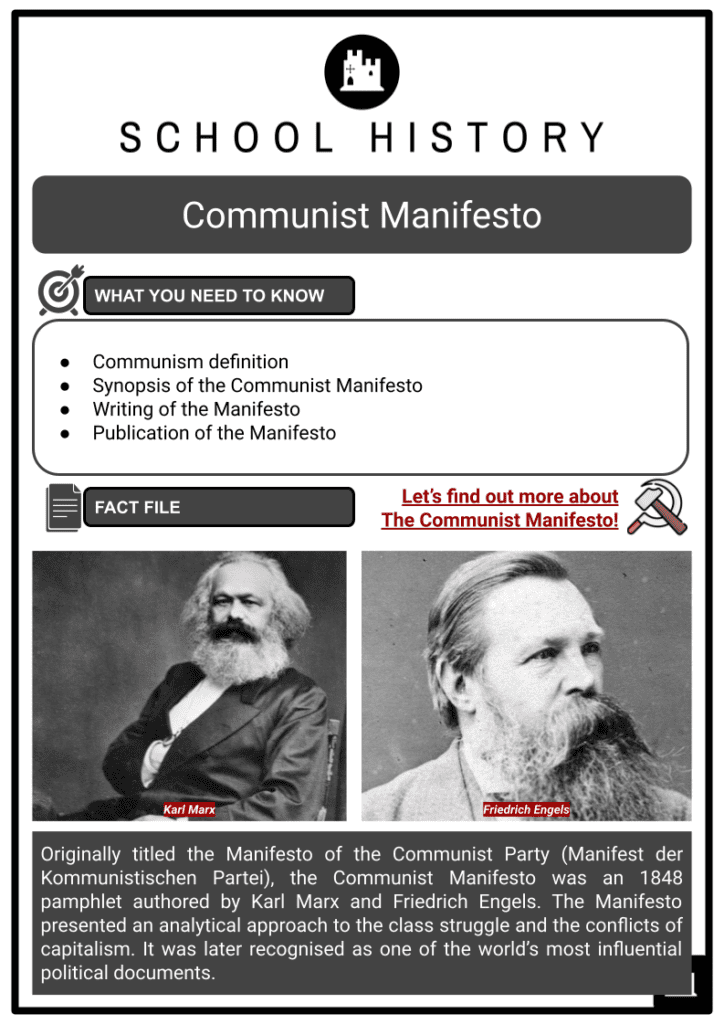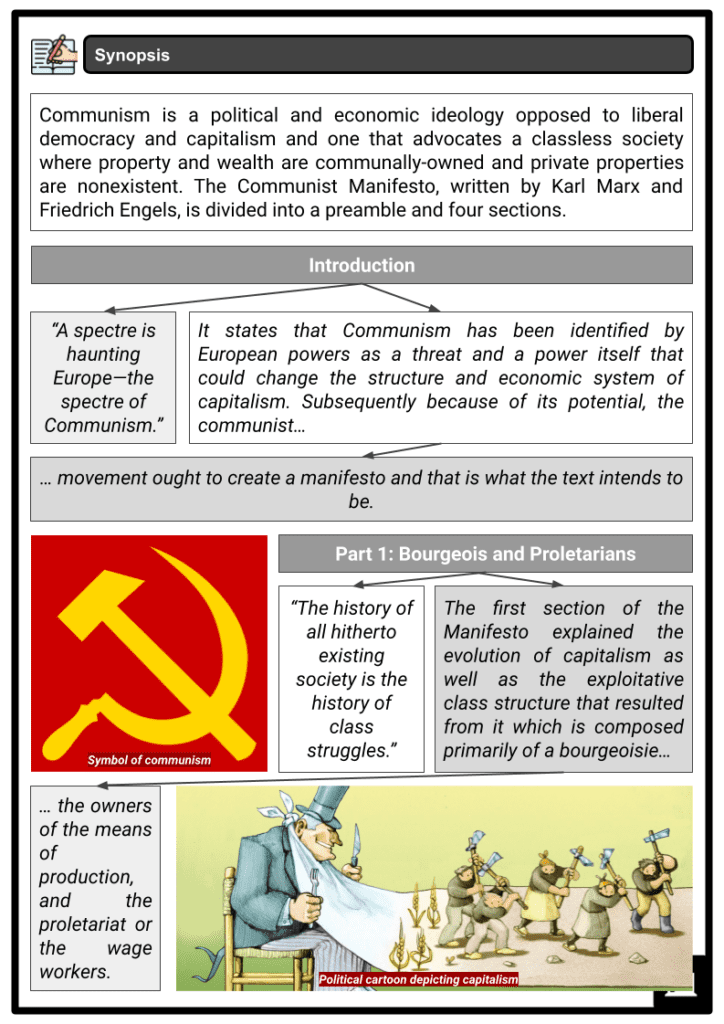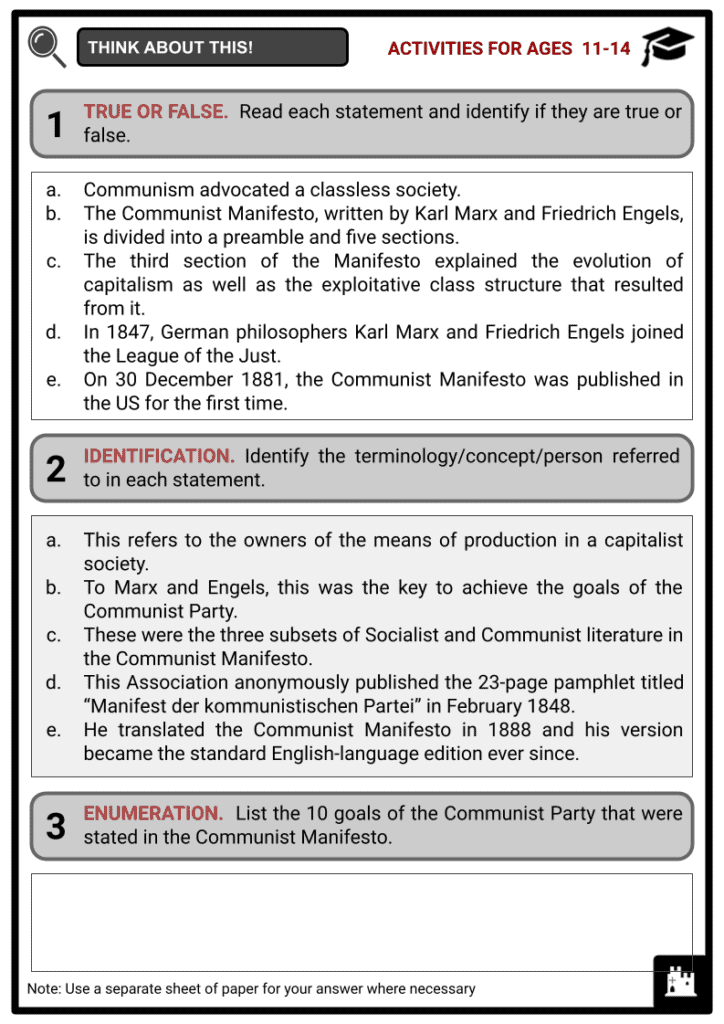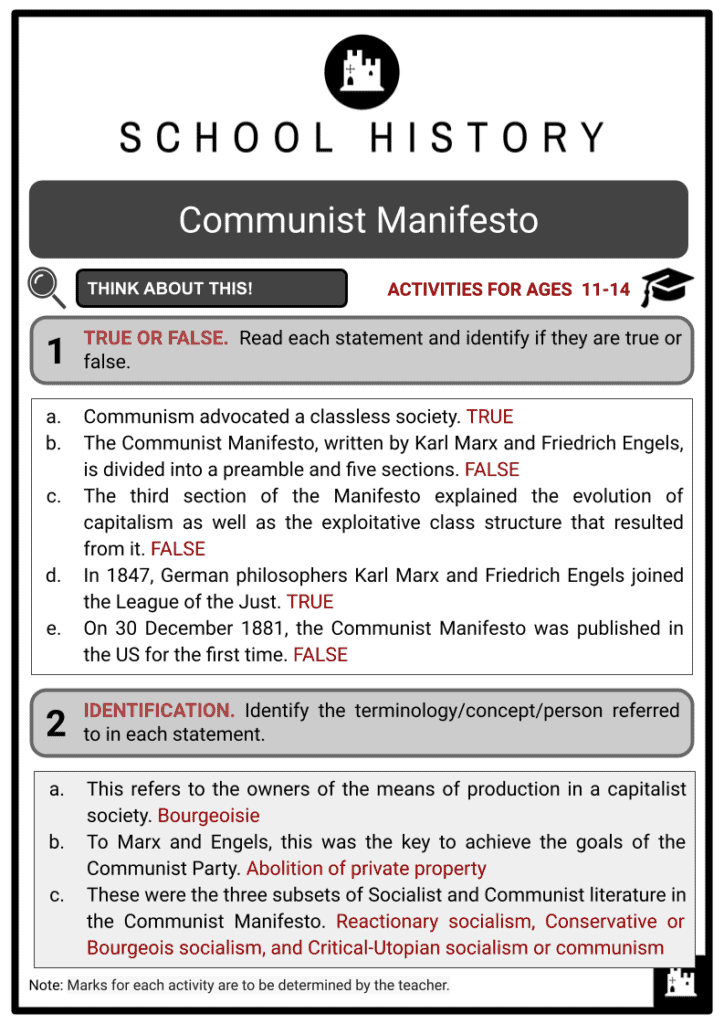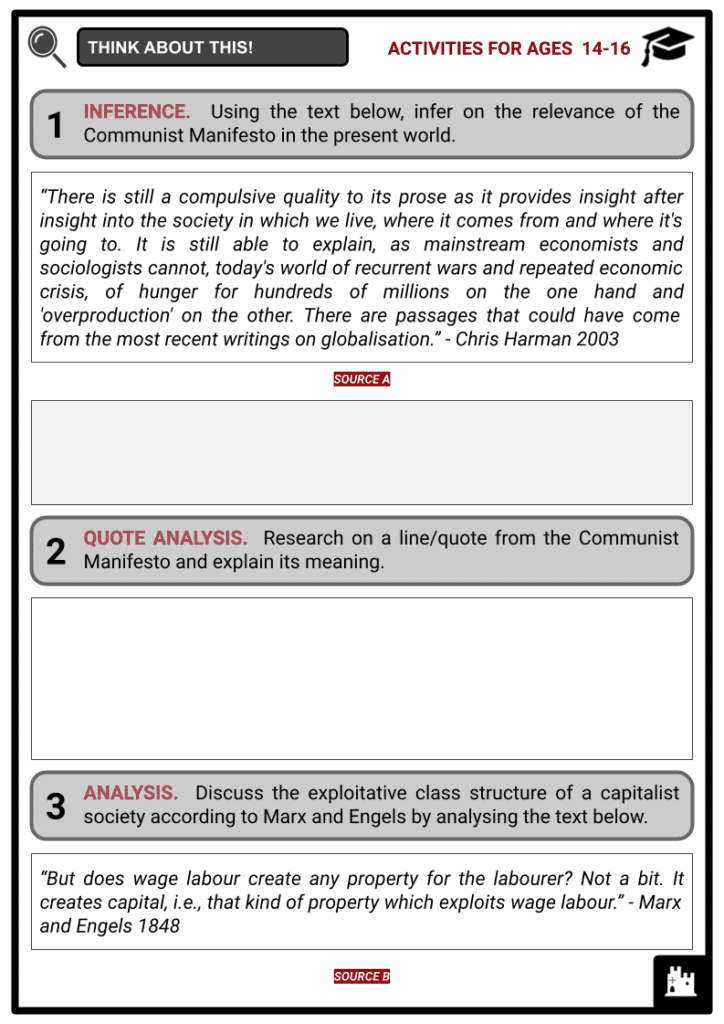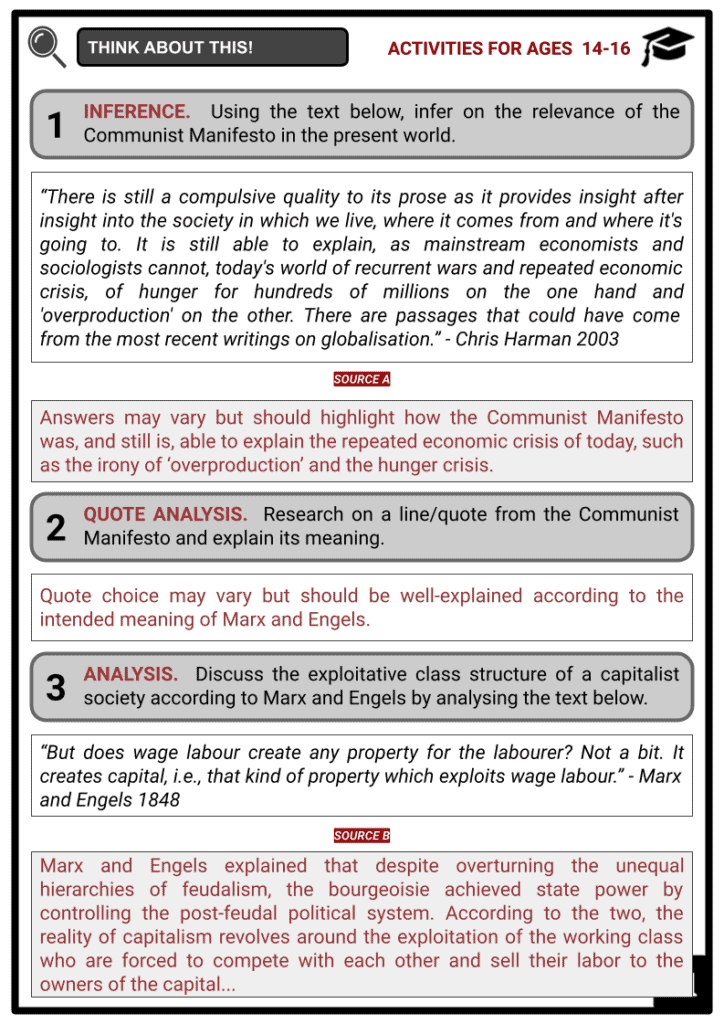Download Communist Manifesto Worksheets
Do you want to save dozens of hours in time? Get your evenings and weekends back? Be able to teach about the Communist Manifesto to your students?
Our worksheet bundle includes a fact file and printable worksheets and student activities. Perfect for both the classroom and homeschooling!
Table of Contents
Add a header to begin generating the table of contents
Summary
- Communism definition
- Synopsis of the Communist Manifesto
- Writing of the Manifesto
- Publication of the Manifesto
Key Facts And Information
Let’s know more about the Communist Manifesto!
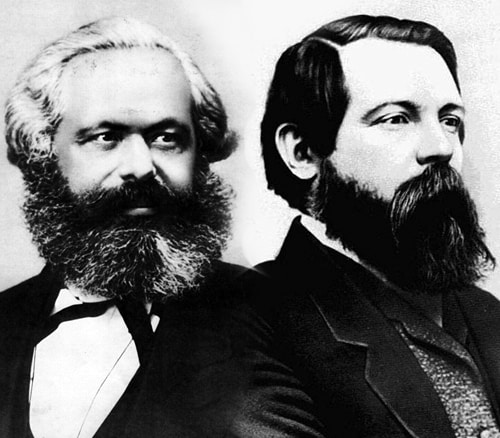
- Originally titled the Manifesto of the Communist Party (Manifest der Kommunistischen Partei), the Communist Manifesto was an 1848 pamphlet authored by Karl Marx and Friedrich Engels. The Manifesto presented an analytical approach to the class struggle and the conflicts of capitalism. It was later recognised as one of the world’s most influential political documents.
Synopsis
- Communism is a political and economic ideology opposed to liberal democracy and capitalism and one that advocates a classless society where property and wealth are communally-owned and private properties are nonexistent. The Communist Manifesto, written by Karl Marx and Friedrich Engels, is divided into a preamble and four sections.
Introduction
- “A spectre is haunting Europe—the spectre of Communism.”
- It states that Communism has been identified by European powers as a threat and a power itself that could change the structure and economic system of capitalism. Subsequently because of its potential, the communist movement ought to create a manifesto and that is what the text intends to be.
Part 1: Bourgeois and Proletarians
- “The history of all hitherto existing society is the history of class struggles.”
- The first section of the Manifesto explained the evolution of capitalism as well as the exploitative class structure that resulted from it which is composed primarily of a bourgeoisie the owners of the means of production, and the proletariat or the wage workers.
- Marx and Engels explained that despite overturning the unequal hierarchies of feudalism, the bourgeoisie achieved state power by controlling the post-feudal political system. According to the two, the reality of capitalism revolves around the exploitation of the working class who are forced to compete with each other and sell their labor to the owners of the capital. With this, workers, or the proletariat that make up the majority of the population, become expendable and replaceable.
- Marx and Engels believed that while capitalism is a widespread economic system, it was destined to become a failure because the exploitative conditions of wage laborers would worsen over time as ownership and wealth concentrated on the bourgeoisie. In time, this would sow the seeds of revolt from the working class. To quote, "What the bourgeoisie therefore produces, above all, are its own grave-diggers. Its fall and the victory of the proletariat are equally inevitable."
Part II. Proletarians and Communists
- "In place of the old bourgeois society, with its classes and class antagonisms, we shall have an association, in which the free development of each is the condition for the free development of all."
- In the second section of the Manifesto, Marx and Engels explain that the Communist Party does not represent a particular faction of workers but rather, the interests of the proletariat as a whole. What the Party wanted for society were three things:
- Turn the proletariat into a cohesive class with unified class interests
- Overthrow the rule of the bourgeoisie
- Seize and redistribute political power
- To Marx and Engels, the key to achieve these goals was the abolition of private property. Though the bourgeoisie would certainly react negatively to this abolition, Marx and Engels explain that clinging to private property only benefits the bourgeoisie in a capitalist society with everyone else suffering because of it.
- 10 Goals of the Communist Party (https://www.thoughtco.com/communist-manifesto-4038797):
-
- Abolition of property in land and application of all rents of land to public purposes
- A heavy progressive or graduated income tax
- Abolition of all rights of inheritance
- Confiscation of the property of all emigrants and rebels
- Centralisation of credit in the hands of the state, by means of a national bank with State capital and an exclusive monopoly
- Centralisation of the means of communication and transport in the hands of the State
- Extension of factories and instruments of production owned by the State; the bringing into cultivation of waste-lands, and the improvement of the soil generally in accordance with a common plan
- Equal liability of all to work; establishment of industrial armies, especially for agriculture
- Combination of agriculture with manufacturing industries; gradual abolition of all the distinction between town and country by a more equitable distribution of the populace over the country
- Free education for all children in public schools. Abolition of children’s factory labor in its present form. Combination of education with industrial production, etc.
Part III: Socialist and Communist Literature
- In the third part of the Manifesto, Marx and Engels present and critique three subsets of Socialist and Communist literature:
- Reactionary socialism
- Conservative or Bourgeois socialism
- Critical-Utopian socialism or communism
- Reactionary socialism includes the Feudal Socialists, the Petty-Bourgeois Socialists, and the German, or "True" Socialist; This type is opposed to the goals of the Communist Party as it seeks to return to a feudal structure.
- Conservative or Bourgeois socialism includes the “economists, philanthropists, humanitarians, improvers of the condition of the working class, organisers of charity, members of societies for the prevention of cruelty to animals, temperance fanatics, [and] hole-and-corner reformers of every kind"; This type seeks to make minor adjustments to the system rather than change and wish for a bourgeoisie without a proletariat.
- Critical-Utopian socialism or communism type opposes a collective struggle by the proletariat as it suggests the creation of new and separate societies rather than reformation of the existing one.
Part IV: Position of the Communists in Relation to the Various Existing Opposition Parties
- “Working men of all countries, unite!”
- In the Communist Manifesto’s final section, Marx and Engels state that the Communist Party supports all revolutionary movements that oppose the existing political and social order. The Manifesto ends by a declaration of alliance with the democratic socialists and calls for united international proletarian action to forcibly overthrow the bourgeoisie through a communist revolution.
Writing
- In 1847, German philosophers Karl Marx and Friedrich Engels joined the League of the Just. The members of the organisation were quickly convinced by Marx and Engels’ ideas of ‘critical communism’.
- A few months after Engels wrote the “Draft of a Communist Confession of Faith” that detailed the League’s programme, he arrived at the organisation’s branch in Paris only to find that Moses Hess, another League member, wrote the “League of Communists” which was an inadequate manifesto for the group. Engels criticised this and convinced the League to entrust him with drafting a new one which later became the “Principles of Communism”.
- On 23 November, Engels expressed his desire to include history and steer clear of the catechism format in favour of the manifesto. He wrote this to Marx whom he later met on the 28th at Ostend in Belgium. A few days later, the two gathered at the Soho, London headquarters of the German Workers' Education Association to attend the Congress.
- Intense debate raged between the League functionaries over the next ten days. Eventually, Marx dominated the others and together with Engels, they were commissioned to draw up a manifesto for the League.
- When Marx returned to Brussels, he engaged in a “ceaseless procrastination” according to his biographer Francis Wheen. Thus, an ultimatum was sent to him on 24 or 26 of January 1848 by the Central Committee of the Communist League. The ultimatum demanded that he submit the complete manuscript by 1 February.
- Despite Marx struggling to finish the job as he was used to working without a deadline, he was able to write it over the span of 6-7 weeks. The final draft of the Manifesto was penned exclusively by Marx, though Engels is credited as co-writer. Engels himself even mentioned that “The basic thought running through the Manifesto… belongs solely and exclusively to Marx".
Publication
Initial Publication
- The Manifesto was later anonymously published as a 23-page pamphlet titled “Manifest der kommunistischen Partei” in February 1848 by the Workers’ Educational Association.
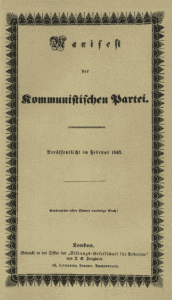
- On 4 March, Marx was expelled by the Belgian police.
- Around 20 March, a thousand copies of the Manifesto reached Paris and then Germany in early April. After being corrected for printing and punctuation mistakes, the 30-page text version now became the basis for future editions of the Manifesto. Despite its prelude announcing that it would be published in other languages, including English, Italian, French, Danish, and Flemish languages, the initial printings were only written in German.
- Soon after the Manifesto was published, Paris united for a revolution to overthrow King Louis Philippe, however, the Manifesto played no role in this since its French translation was not yet published in Paris around that time. The defeat of the 1848 revolutions in Europe led to the fall of the Manifesto into obscurity where it remained throughout the 1850s and 1860s. Over the next few decades, only a few new editions of the Manifesto were published.
Revival from 1872-1917
- In the early 1870s, the Manifesto was revived. According to historian Eric Hobsbawm, the popularisation of the Manifesto was because of the following reasons:
- Leadership role of Marx that played in the International Workingmen’s Association or First International
- Marx came into much prominence among socialists for his support of the Paris Commune of 1871,
- Treason trial of German Social Democratic Party (SPD) leaders
- In 1872, after trial prosecutors of the SPD read the Manifesto out loud as evidence, Marx and Engels rushed out a German-language edition where the title was shortened to The Communist Manifesto or Das Kommunistische Manifest. This version became the bedrock the authors based on for future editions.
- From 1871 to 1873, the Manifesto was published in over nine editions in six languages.
- On 30 December 1871, it was published in the US for the first time. The 1888 edition translated by Samuel Moore became the standard English-language edition ever since. Over the next forty years, the publication of the Manifesto rose to hundreds of editions in thirty languages as social-democratic parties used them across Europe. Its principal region of influence was in the central belt of Europe, from Russia in the east to France in the west.
- The Manifesto also spread outside Europe as Chinese, Japanese, and Spanish editions were published. The uneven geographical spread of it reflected the development of socialist movements, in particular the Marxist variety.
Pervasiveness from 1917 to Present Time
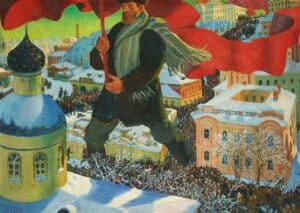
- The world’s first socialist state was founded along Marxist lines, following the Vladimir Lenin-led Bolsheviks rise to power in Russia. The Soviet Union was a one-party state under the rule of the Communist Party of the Soviet Union or CPSU whose members were expected to know the classic works of Marx, Engels, and Lenin and whose leaders were expected to base their policy decisions on a Marxist-Leninist ideology.
- With this, the widespread dissemination of Marx and Engels’ works became an important policy objective as it was published on a very large scale with cheap editions available in several languages across the world, making it no longer an exclusive domain of Marxists and academicians.
- Hobsbawm noted that the Communist Manifesto “was no longer only a classic Marxist document, it had become a political classic tout court”. In the 1990s, despite the collapse of the Soviet Bloc, the Communist Manifesto remained ubiquitous.
Image Sources
- https://en.wikipedia.org/wiki/Marxism#/media/File:Marx_and_Engels.jpg
- https://upload.wikimedia.org/wikipedia/commons/8/86/Communist-manifesto.png
- https://upload.wikimedia.org/wikipedia/commons/thumb/7/70/Kustodiev_The_Bolshevik.jpg/1280px-Kustodiev_The_Bolshevik.jpg

